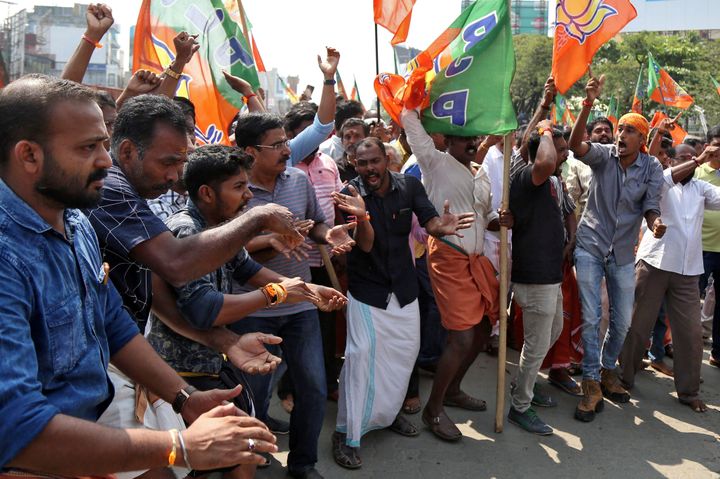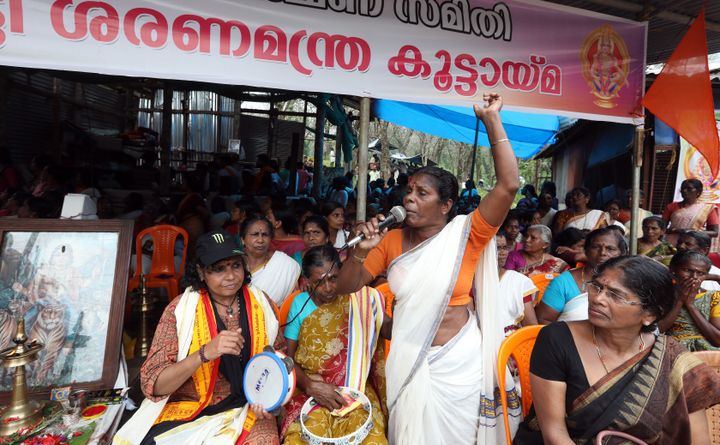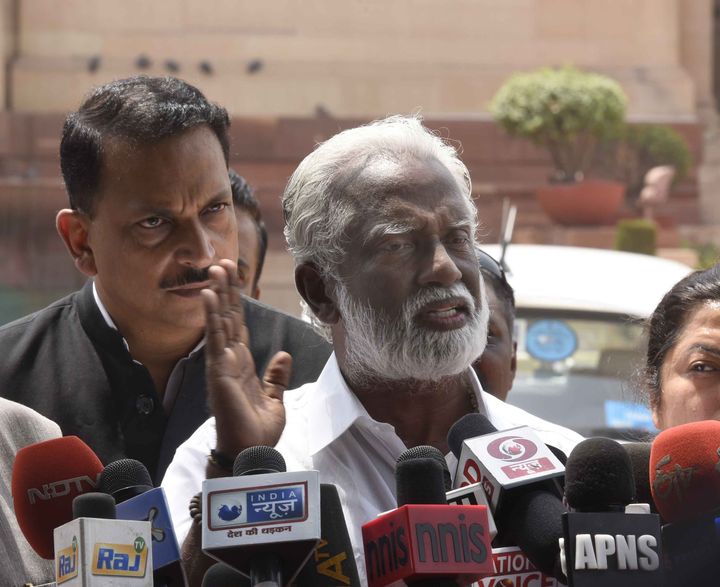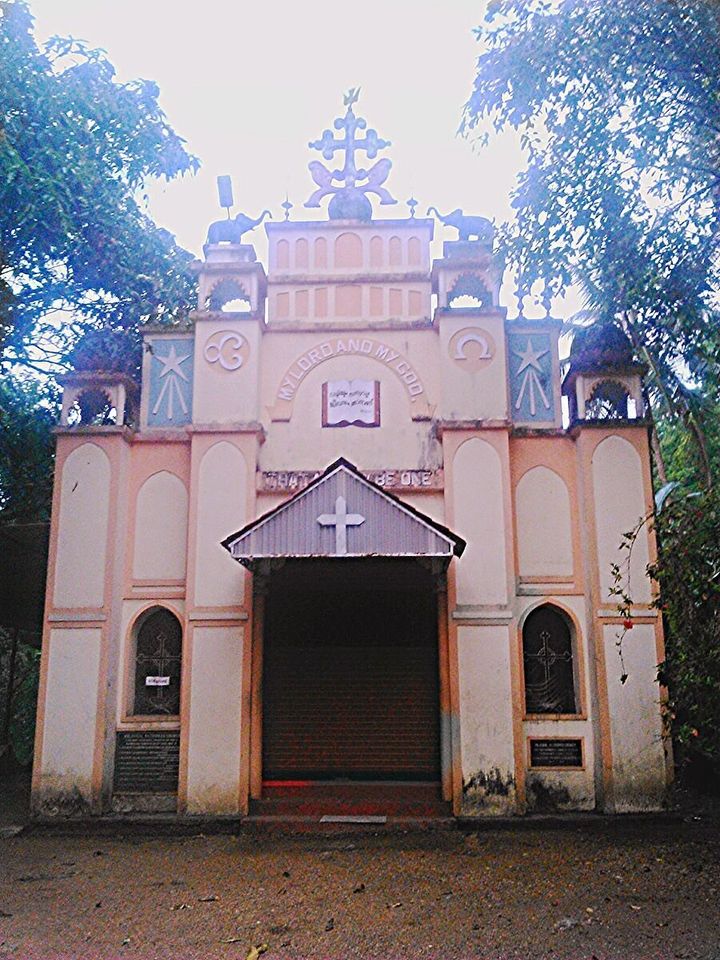
Quiet for the most part of the year, Nilakkal comes alive during the annual Sabarimala pilgrimage between November and January. This village in Kerala’s Pathanamthitta district lies 26 km from the shrine of the celibate deity Ayyappa and serves as one of two base camps for pilgrims. With the pilgrimage having begun on Sunday, Nilakkal is expectedly bustling. But mixed in with the pilgrim crowd is a large police contingent, tasked with keeping possible miscreants in check.
The security arrangements are in anticipation of trouble following the Supreme Court’s decision on November 14 to refer a batch of review petitions in the Sabarimala case to a larger constitutional bench. The case pertains to the court’s September 18, 2018, order overturning the shrine’s practise of denying entry to women of menstruating age (10 to 50 years). That verdict had led to months of unrest and violence, with the BJP and Sangh Parivar at the forefront of the anti-women campaign.

However, the events of last year and even the past week are not the first time Nilakkal has been engulfed in religious tension. The village was at the epicentre of Kerala’s first major communal clash back in 1983. Trouble had then broken out between the Catholic community, who wanted to build a church near a Shiva temple, and the Sangh Parivar, which had led a violent campaign against it. That agitation is credited with giving the Sangh a foothold and a growth spurt in Kerala.
A church next to a temple
For visitors to Nilakkal, a small temple with an arch bearing an imposing image of Shiva’s avatar Mahadeva is among its most prominent landmarks.
It was next to this temple that the Catholic community sought to build a church dedicated to St Thomas, one of the 12 apostles of Jesus Christ who is said to have brought Christianity to India in 52 AD.
St Thomas is believed to have established “Ezharapalli” or “seven and a half churches” in Kerala, including one in Nilakkal. By most accounts, the Nilakkal church was incomplete and hence an “arappally” or half-church, which later fell into ruin.
Residents of Nilakkal say it all began on March 29, 1983, with the discovery of a stone cross on land owned by the Kerala Farming Corporation, barely 200 metres from the temple. The next day, followers of Mathew Anthiyakulam, vicar of the nearby Pamba Valley Church, arrived at the spot singing devotional songs. Claiming the cross was a remnant of the ancient church established by St Thomas, they built a thatched shed over it and started holding daily prayers. Soon after, the Kerala Catholic Congress, an organisation of the laity, set up a Nilakkal Action Council to prepare for the construction of a church at the site. On the council’s request, the state’s Congress government allotted it one hectare (2.4 acres) of land close to the temple for the church construction.
This infuriated Hindu residents and Sangh Parivar leaders. To counter the church’s claims, they convened a Vishal Hindu Sammelan in Pathanamthitta under the leadership of spiritual leader Sathyananda Saraswati and Kummanam Rajasekharan, who was then a Vishwa Hindu Parishad leader. Rajasekharan – who later served as Kerala BJP president and governor of Mizoram – also headed a Hindu Unity Action Council comprising 27 Hindu religious groups.
The council claimed there was no proof of St Thomas’s visit to India or of his having established churches. They demanded the removal of the cross, alleging it was of recent origin and had been planted on “Hindu holy land”. Calling the proposed church a symbol of “government-sponsored communalism”, Rajashekaran accused the government of sacrificing the interests of Hindus to get Christian votes.

Hindu mobilisation
Things quickly took a violent turn, which lasted months. Even K Karunakaran, who was the chief minister, was not spared.
“Karunakaran was in the habit of praying at the Sri Krishna Temple in Guruvayur on the first day of the Malayalam months,” said human rights activist and lawyer PA Pouran. Citing old newspaper reports, he said, “As usual, he reached the temple on May 15, 1983, for morning prayers. As soon as he entered the temple, a huge gathering of people affiliated to the then Sangh Parivar platform Hindu Aikyavedi prevented him from offering prayers. They accused Karunakaran of illegally handing over land holy to the Hindus at Nilakkal for the construction of a church.”
The developments in Nilakkal led to a massive Hindu mobilisation. Violating prohibitory orders, the RSS organised a protest march in Thiruvananthapuram. More than 1,000 of its workers and those of the Hindu Munnani religious group were arrested from across the state for unleashing violence. In Nilakkal, RSS and Hindu Munnani activists dismantled the thatched shed and manhandled Christians. Tensions soared after Hindu Munnani activist Koorambala Chandran Pillai died weeks after being injured in a police lathicharge.
On June 4, 1983, Nilakkal witnessed an intense hour-long battle as the police tried to disperse a throng of rock-throwing VHP activists with batons and teargas. The clash left 50 injured while 30 protestors, included nine ascetics, were arrested. The VHP said they would not allow a church anywhere near the temple or even within range of the 18 hills surrounding the Sabarimala shrine, asserting that the area belonged to Hindus alone.
On July 16, 1983, hundreds of VHP workers gathered again in Nilakkal for a protest meeting with night-long prayers and rituals. Prominent religious figures such as Vidyananda Saraswathi and Sathyananda Saraswati addressed the crowd.
The next day, Hindu temples across Kerala flew black pennants to protest the church construction plan. In the following days, thousands of Hindus donning black cloths over their mouths and on their hands marched on the streets of all the major towns and cities of Kerala, condemning the police action and arrest of holy men in Nilakkal.
Coinciding with the protests in Nilakkal, two Catholic churches were attacked with homemade bombs, 15 state transport busses were vandalised and 28 protestors arrested.
The violence prompted the government to ban the activities of the Hindu Unity Action Council.
Peace was finally restored after Gandhian MP Manmadhan held discussions with both sides. A meeting of Kerala bishops was held and it was decided that the cross would be relocated to a place agreed upon by both action councils. The church would be built at this spot 4 km south-west of the temple, well outside the area the Hindu side identified as Ayyappa’s sacred grove. The spot where the cross was originally found is now part of a parking lot for pilgrims to Sabarimala.
Where the church stands

A small church dedicated to St Thomas now stands in Angamoozhy, the spot that was agreed upon all those years ago. Very few of those who visit it know of its history or its role in what may well be the largest communal flare-up in Kerala’s history.
What makes this church different from others is that it follows the principle of ecumenism, which promotes unity among the various Christian churches. Kerala’s Christian community comprises numerous denominations, prominent among them being the Syrian Catholic, Orthodox, Marthoma and Jacobite churches.
“This is the only church devoted to ecumenism in the entire world,” said Joseph Powathil, archbishop emeritus of the Syro-Malabar Catholic Archeparchy of Changanassery and one of the religious leaders involved in the Nilakkal negotiations. “By constructing this church here under the joint aegis of all the major Christian denominations in the state, we proved that harmony between the churches is possible along with respecting the sentiments of people from other religions.”
Many other Christian leaders who spoke with HuffPost India similarly sang praises of the church in Angamoozhy but were reluctant to delve into the impact of the Nilakkal movement on Kerala society.
Rise of the Sangh
However, it is universally agreed that the Sangh traces its growth in Kerala society and politics to the events of 1983.
“The Sangh Parivar began the process to communalise Kerala in 1983 by whipping up a frenzy against the plan to construct a small church close to the Mahadeva temple in Nilakkal,” said activist and Dalit thinker Sunny Kapikad. “In a way, Nilakkal is a milestone in the Sangh Parivar’s growth in Kerala.”
Social activist and researcher K Santhosh Kumar agreed: “Though the church issue was settled amicably, the agitation and violence created a climate conducive to the growth of the Sangh Parivar. It was the first time orange-robed sanyasis descended on the social and political platforms.”
K Surendran – the face of the BJP’s campaign against the entry of women at Sabarimala last year – admitted the 1983 agitation had helped his party consolidate its base in the state. “Nilakkal gave us a big boost and a solid foundation in Kerala,” he said.
The BJP hopes its Sabarimala movement will similarly pay rich dividends.
“It’s true the BJP and Sangh Parivar have used the turn of events since the court order permitting the entry of women to the temple to make maximum inroads into Kerala society, which was hitherto averse to Hindutva,” said Kapikad. “They achieved significant growth across the state in the last one year since the unrest in Nilakkal.”